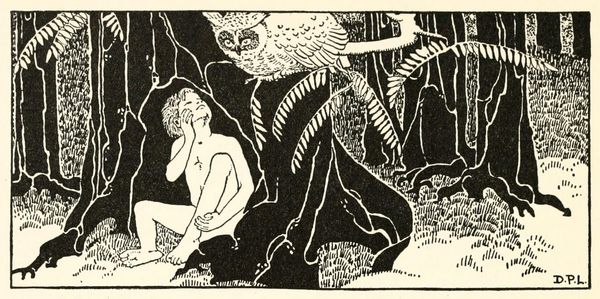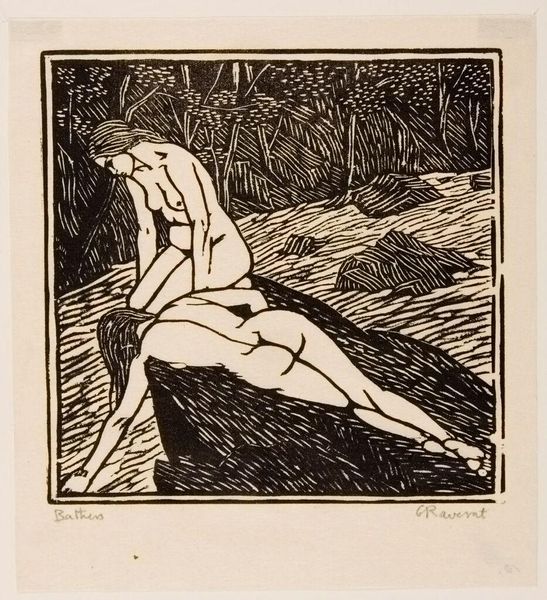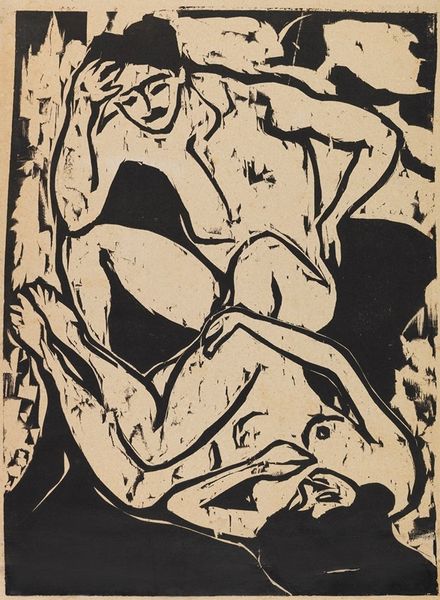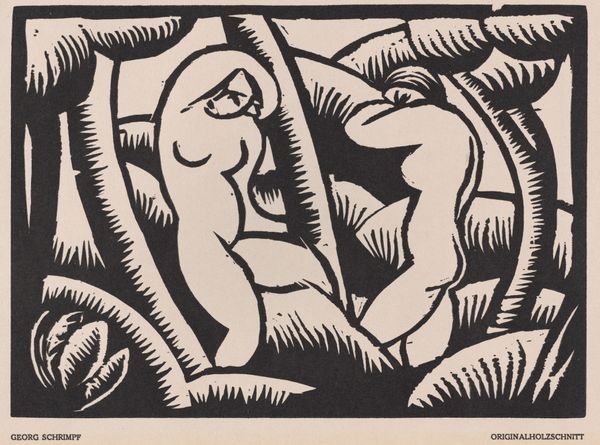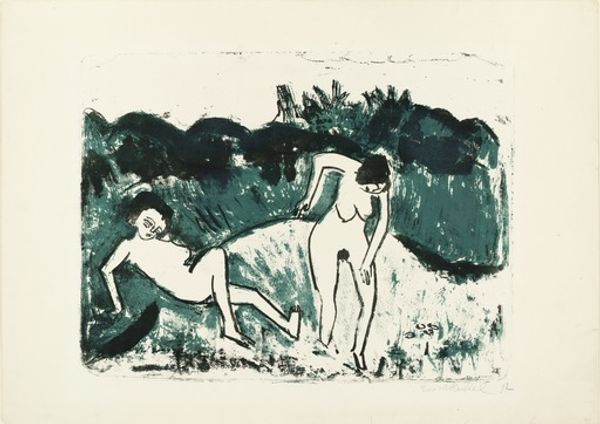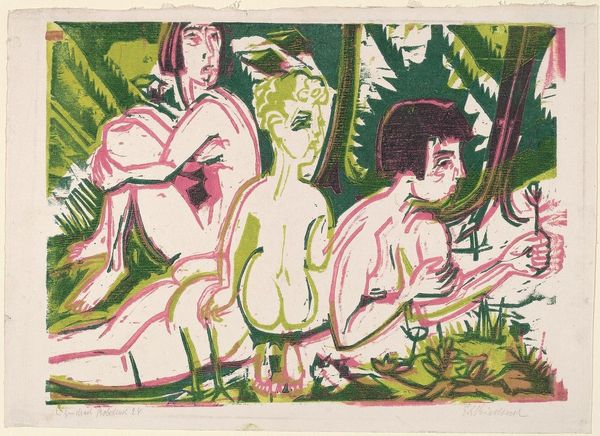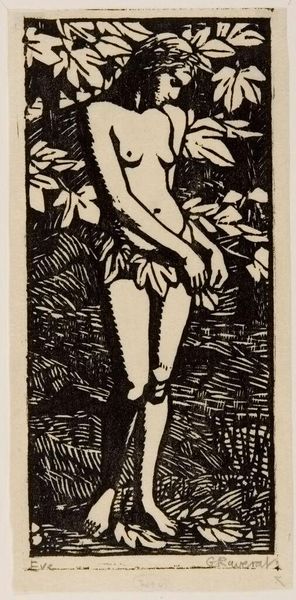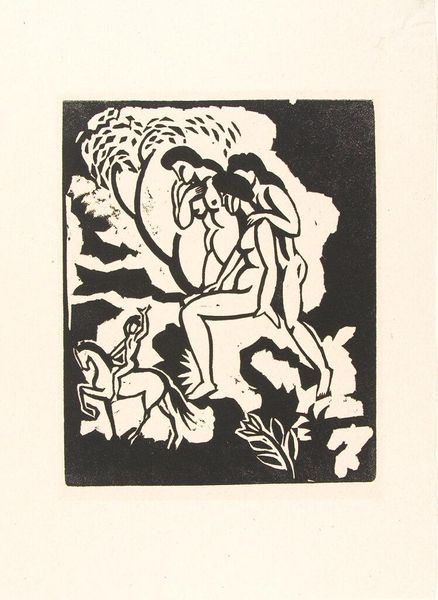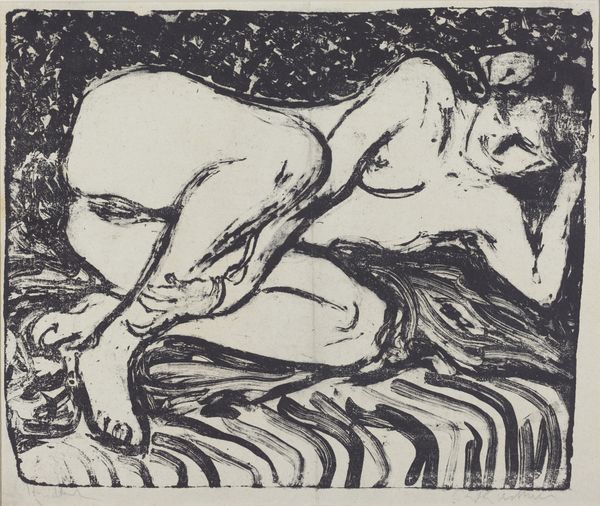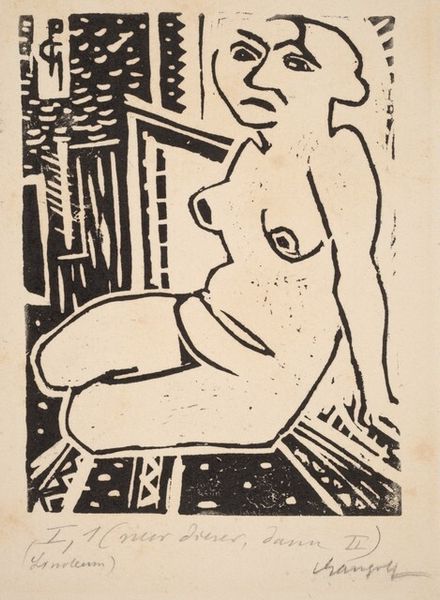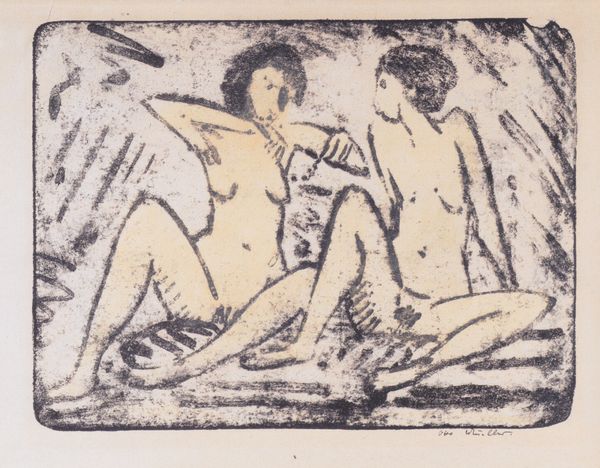
Copyright: Public domain
Curator: Boris Kustodiev’s woodcut, “Bather Seated on the Shore,” created in 1926, presents a striking contrast between light and shadow. Editor: The first thing that grabs me is how bold it is, this play of stark white figures against an impenetrable black background. It evokes a feeling of being hidden, observed maybe. Curator: The woodcut medium lends itself to that starkness, doesn't it? Kustodiev’s choice is interesting when we consider his oeuvre more broadly, because this simplification diverges significantly from his generally more decorative oil paintings that render a bright folk aesthetic. It also falls into an important timeframe after Kustodiev became wheelchair bound. Editor: Exactly! I immediately read that dramatic use of contrast as speaking to something deeper than just artistic style. Look at the reclining nude figure in the background; her pose mirrors the seated bather but is much more recessive. This could signal themes of invisibility, or perhaps different ways of embodying freedom given Kustodiev's restricted experience, and considering what a heteronormative interpretation expects of "femininity." Curator: The bather figure in the foreground definitely anchors our gaze. Considering Kustodiev's personal struggle and disability later in life, and his use of academic painting norms, perhaps it is indeed relevant to understand the work within those limitations and struggles. Though that runs the risk of making direct biographical claims based only on stylistic interpretations. Editor: Well, it’s hard not to see his lived experience woven into it somehow, even subconsciously! And the woodcut medium flattens space, foregrounding that interplay between agency and objectification, between revealing and concealing—what the body performs within patriarchal regimes of looking. We need to engage with that critically. Curator: I see your point. I think considering the socio-political milieu in the 1920s in the wake of war is key for me; it is important to see how new technologies in mass media may have pushed the visual culture that informs an artist. Editor: It does seem, even with its historical context, this piece opens up broader questions about how we see and interpret bodies, and how we acknowledge the nuances of artists' lives. Curator: Indeed. It's a powerful reminder that every artwork is shaped by its own set of conditions, while potentially sparking contemporary discourse.
Comments
No comments
Be the first to comment and join the conversation on the ultimate creative platform.

